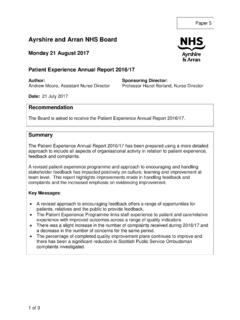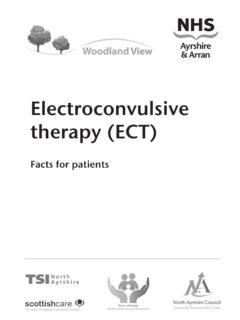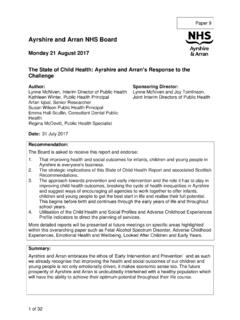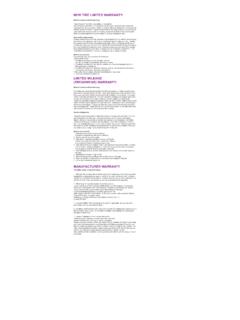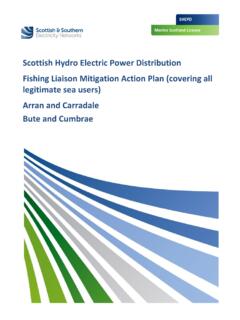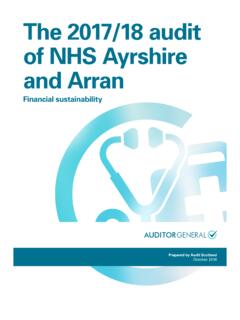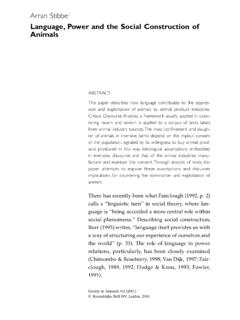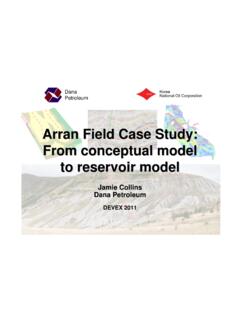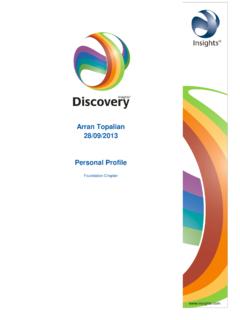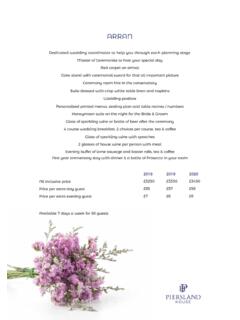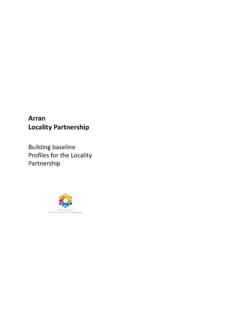Transcription of NHS Ayrshire and Arran - nhsaaa.net
1 Audit ReportTimesPrivate and ConfidentiaReport30 November and ArranInternal Audit Report WaitingTimesPrivate and Confidential ReportAyrshire and ArranWaiting Summary .. and Scope .. and Controls and system management .. List Procedures and Comparison with SGHSCD Guidance .. and application of local waiting times procedures ..18 Appendix 1 Scope (SGHSCD Terms of Reference) ..21 Appendix 2 Reporting 22 Appendix 3 Diagram of System Controls .. 23 Appendix 4 - Action Plan .. 24 Appendix 5 - Core Analytical Queries .. 29 This report has been prepared solely for NHS Ayrshire and Arran in accordance with the terms andconditions set out in our engagement letter. We do not accept or assume any liability or duty of care forany other purpose or to any other party. This report should not be disclosed to any third party, quoted orreferred to without our prior written audit work will be performed in accordance with NHS Internal Audit Standard.
2 As a result, ourwork and deliverables are not designed or intended to comply with the International Auditing andAssurance Standards Board (IAASB), International Framework for Assurance Engagements (IFAE) andInternational Standard on Assurance Engagements (ISAE) SummaryBackground and ScopeThis internal audit review, commissioned by NHS Ayrshire and Arran following instruction from the (then)Cabinet Secretary, has followed the Terms of Reference set out at Appendix 1. This work has not constituted aformal forensic investigation into waiting times within NHS Ayrshire and Arran but rather has considered anumber of specific areas relating to waiting times reporting and InterrogationA separate PwC data team were engaged to collect data relating to waiting times from each NHS Boardselectronic waiting times systems and to perform a number of core analytical queries to support NHS Boards Internal Auditors in the completion of their reviews.
3 A list of core analytical queries was developed by the NHSB oards Internal Auditors, with input from PwC, to provide data that assisted internal audit in the performanceof their respective reviews. The list of core analytical queries is contained in Appendix 5 for each question, output data was produced for the period 1 January 2012 to 30 June 2012 (some 'corequeries' were amended based on the information that could be extracted from TrakCare). Graphs and tableswere produced showing activity by month and speciality. This was analysed by the Internal Audit team toidentify trends and any potential issues which then enabled a focussed, risk based approach based on sampletesting. From this analysis the following specialties were selected for testing: Ear, Nose and Throat (Inpatients); Trauma and Orthopaedics (Inpatients and Outpatients); Endoscopy; Ophthalmology (Inpatients and Outpatients); Urology (Inpatients); Cardiology; General Surgery (excl Vascular); and GynaecologyBoth inpatients and outpatients were included within our samples.
4 The extent of testing is detailed withinSection review involved discussions with a range of managers and staff, consideration of relevant waiting timesreports and the interrogation, analysis and testing of selected data in the TrakCare system, undertaken on asample findings of our work have enabled us to form a view on a number of key areas around the waiting timesprocess within NHS Ayrshire and Arran , as related to the three objectives set out in the Terms of Reference. Assuch, we have highlighted a number of issues and identified areas for improvement which should be consideredand actioned by the NHS Ayrshire and StatementOn the basis of the work performed we found that overall, the waiting times processes and procedureswithin NHS Ayrshire and Arran could be further improved to enhance overall governance and to all territorial NHS Boards in Scotland, the waiting times supporting systems within NHS Ayrshireand Arran have been designed to manage the system rather than to provide a clear and evidenced audit trailacross all aspects of the patient journey.
5 This absence of an audit trail relates in the main, to theadministration of the process and recording of offers to patients , rather than clinical decision such, there is no way of formally verifying the validity of the application of unavailability withoutcontacting or asking patients. The process is complex with the majority of interaction (including offers )with the patient being made by telephone. This requires NHS staff to interact with the patient and ensureflexibility around making the reasonable offer(s) as prescribed in the New Ways review highlighted certain areas where further improvements could be made, including as noted above,the level of detail recorded on the waiting times system which is particularly important as in approximately60% of cases unavailability is classed as either social or holidays.
6 Our findings, together withrecommendations for improvement, are summarised below and set out in further detail within each relevantsection of the four key recommendations (higher risk) that our review has highlighted are: The role, remit and attendance at the Internal Waiting Times Group, who manage waiting lists on anoperational basis, should be reviewed. Given the key role this group currently plays it is important thatagreed actions are tracked and followed up, and all key attendees attend, including the relevant Directors. The data presented to the Directors Team and then the Board is not always timely, is at a very high leveland may not allow for the effective scrutiny of waiting times as certain information is missing for exampletotal size of waiting list and number of patients per speciality that are unavailable.
7 Although dashboardsare presented, detail in respect of actions being taken varies, supporting action plans are not presentedand it is difficult to track what actions have been taken, what is outstanding and the success of theactions. The Local Access policy in place for the period of our review, 1 January 2012 to 30 June 2012, is vagueand does not define a reasonable offer. In addition, the policy refers to operational procedures, whichare not being used and are outdated, dating back to 2006/07. Sufficient information should be recorded on TrakCare to fully support the application of a period ofunavailability. We identified 50 instances where no additional comments were recorded on the addition, we identified from our sample, 16 instances where unavailability was updated over 7 daysretrospectively.
8 Finally, we note that data is still being maintained using Kardex, and this informationmay record additional correspondence with the patient but is disposed of once the patient has agreed action plan has been completed and is attached at Appendix 4. Each finding has been allocated arisk rating so that NHS Ayrshire and Arran management can focus attention on the higher priority RiskHigh RiskMedium RiskLow RiskTotalNumber ofRecommendations-4419 Reporting We examined a sample of reports presented to the Directors Team Meeting and the Board and noted thatinformation is presented in the same manner in the form of a performance scorecard, usingred/amber/green status. We also noted that that remedial action plans are prepared and presented to theDirectors Team Meeting for areas where performance is not as expected.
9 However, it is noted thatremedial action plans varied in detail with some including very little detail or a clear commitment on5timeframes, and we were unable to verify that agreed actions had taken place, and how the remedial actionplans had moved on a month by month basis. From a review of the Director Team Meeting Reports and also the Board reports we identified a time gap ininformation, for example the Director Team at the end of February 2012 was focusing on available data upto end of December 2011, similarly the Board meeting in May 2012 was based on data in February 2012. Operationally there is an internal waiting times meeting, which is held fortnightly and this discussesoperational issues on a patient by patient basis where relevant. From a review of a sample of minutes forthe period, selected at random, it is noted that this group has a wide membership, and from the sample ofminutes we reviewed this group is not always very well attended, in particularly in one meeting (1 May2012) there were 19 apologies.
10 It is noted that from 8 operational waiting times group minutes for theperiod under review (January 2012 to June 2012), the Director of Integrated Care Partnership servicesattended 1 out of 8 meetings, and the Director of Integrated Care Emergency Services attended 2 out of8. Finally, from the minutes we could evidence actions being agreed but these did not appear to besubsequently followed up. Management should revisit the purpose of this group, its membership andoperational arrangements including how actions are tracked. We did identify areas for potential improvement in the content and detail of waiting times data within theWaiting Times Report, which is presented to the Directors Team Meeting and the Board. Currently thesereports are at a high level and across a number of waiting times performance guarantees.


